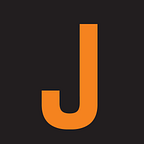10 lessons in news product training we learned the fun way
By: Marie Gilot, J+ Executive Director
Over the past three years, the Product Immersion for Small Newsrooms taught 175 journalists the basics of product thinking for news, and the many ways it can improve service to the audience and lead to sustainability. It also taught us, the program organizers, a thing or two about leading such a program.
These lessons guided us in creating the next level of product training, the News Product Management Certification launching in Winter 2024 (applications open now!). Today we’d like to share said lessons with you.
(PS: More about the Product Immersion; You can skip if you are familiar: This tuition-free program is two months of virtual, live classes and group coaching for cohorts of 25 journalists in small to midsize local news organizations in the Americas, Europe and Africa, and Asia-Pacific with little or no experience in product. The program, a partnership between CUNY and NPA, with support from the Google News Initiative, is widely popular with a NPS of 87 and a range of immediate impact including promotions to product roles, starting product teams and launching audience research, data projects and news products.)
So, here’s what we learned from designing and running such a program, from simple logistics, to guiding philosophy.
1. Filter candidates for humility and curiosity
It’s very satisfying to turn a recalcitrant journalist into a product believer but let’s face it, that doesn’t happen often because product thinkers are open-minded to begin with. For Product Immersion, we decided that we didn’t need candidates with prior knowledge of product or big resources. What we needed were people who shared some simple qualities: The humility to accept that we don’t know what audiences need if we don’t ask them, and the curiosity to ask.
2. Don’t skip interviews
We have done hundreds of 20-minute candidate interviews for Product Immersion. It’s only fair to the candidates, especially the ones for whom English is a second language, and we were able to start our relationship with the cohort as early as possible.
3. Start with design thinking
We always kicked off the curriculum with a session on design thinking, the heart of product development and management. We were lucky to have a trailblazing design thinker like Justin Ferrell to gently guide our journalists toward a new way of thinking, one that can unleash their creativity. His session has been called “mind-blowing” in the best of ways.
4. Create a safe space
There aren’t many rules in the Product Immersion but the Chatham House Rule is one. Creating a safe space online where everyone can share professional experiences candidly is the basis of learning.
5. Insist on an equity lens
Since the pilot cohort of Product Immersion in early 2020, we’ve had a class called “Designing for Equity” in the curriculum. It is our most controversial session, especially outside the U.S. where DEIB may not be seen as a priority. The class has been taught by various talented people throughout the years (shoutout to Roxann Stafford & Ben Wurd, Emma Carew-Grovum & Kim Bui and Feli Carrique) and it still only resonates with only about half of each cohort. It’s OK. We’ll keep teaching future product managers about their responsibility to avoid repeating the inequities of the world in their products. This work is going to take time but it’s too important to stop.
6. Accept that there will be resistance
Have you met journalists? They are skeptical creatures, especially when you come at them with producty jargon.
7. Be serious about empathy
Similarly, journalists can be tough, unsentimental types. Creating room to allow empathy with the audience is crucial for product development. The number one lesson that participants take from Product Immersion is the importance of centering the audience.
One alum wrote in our post-program survey, “One thing that stuck out to me was that as product managers, we should always remember that news products should be something that our audience needs and that relates to our mission, not something we simply want.” We should not forget how revolutionary such a simple idea can be.
8. Aim for the small, immediate wins
We asked the Product Immersion participants to try mini-experiments in their newsrooms during their short time in the program. Some of them tried out Agile work methods to make team meetings more efficient. Others started gathering and sharing metrics with their colleagues. Many became the voice of the audience in editorial meetings. Product is an iterative practice and no experiment is too small to start.
9. Don’t underestimate the transformative power of product thinking
Product Immersion alumni have talked about a “before” and an “after” the program. We have rarely had participants who felt unmoved from their exposure to product thinking. Most feel a foundational shift in the way they see the world and their profession. A culture shift has begun.
10. Continue working with amazing partners
CUNY started Product Immersion with News Catalyst, with support from the Google News Initiative, which allowed us to offer the program for free and helped promote it around the world. Along the way, the News Product Alliance was formed and became a Product Immersion partner as well. Cohort after cohort, we improved and grew together.
And it’s not over: Check out the NPMC, an advanced training for news product people. Applications are now open until November 3, 2023!
